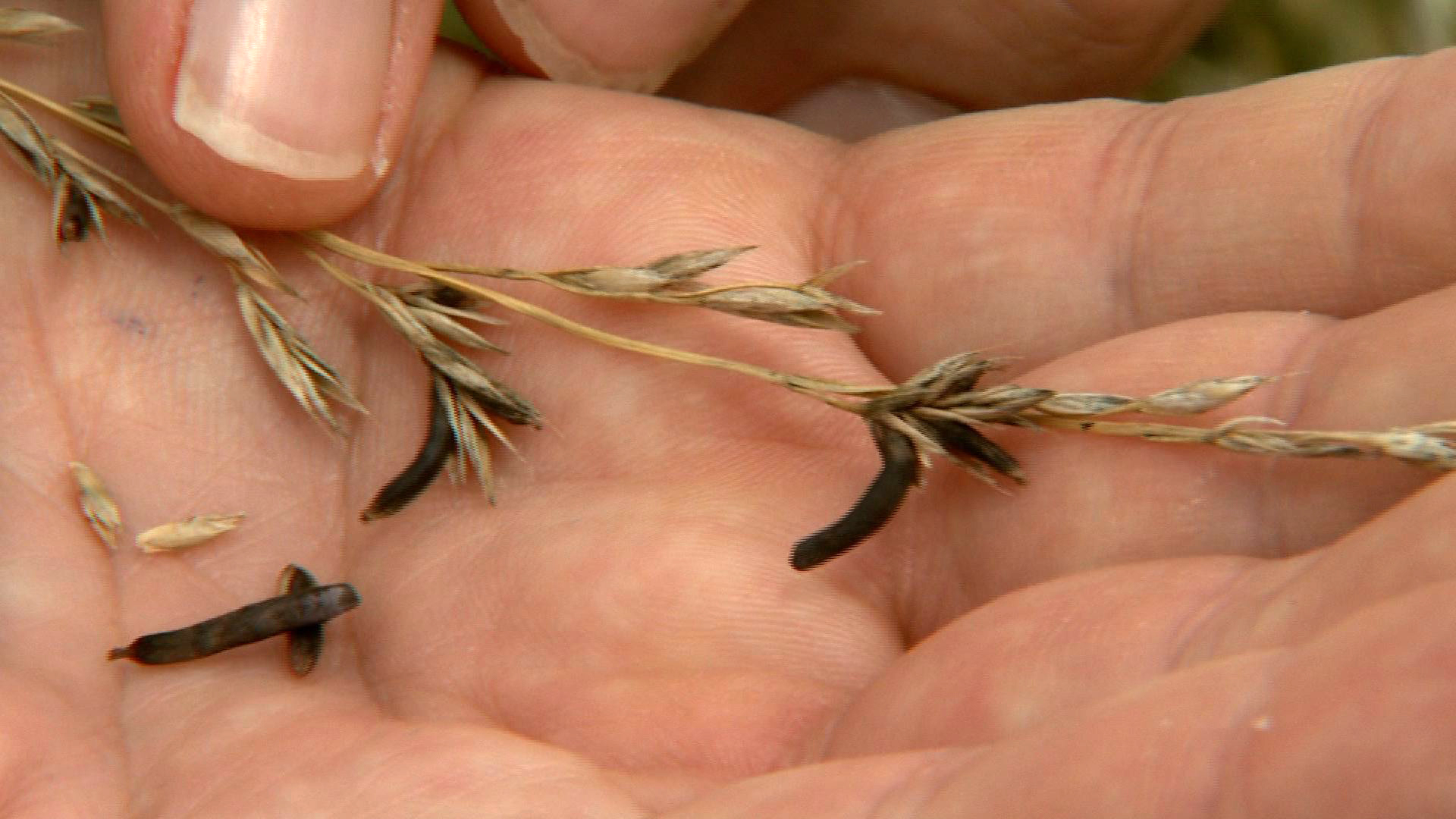Make second cutting of hay to reduce ergot infestation

COLUMBIA, Mo. — University of Missouri livestock and forage specialists are reporting ergot infestations that can cause major losses in livestock, said MU Extension state specialist in veterinary toxicology and animal health Tim Evans.
Ergot is a toxic fungus that infects the seed heads of many grasses and some cereal grains. It can cause severe illness and even death in livestock, especially cattle, and possibly horses, Evans says.
In a press release, Evans said, “You take a hot day and combine ergot, it’s likely going to be a problem for animals.”
Evans says a plentiful first cutting of hay and rain delays may lower demand in the hay market in non-drought years, but that should not deter forage producers from taking a second cutting because of ample supply and possible poorer-quality hay.
“In predominantly tall fescue pastures, cut it anyway, leaving it at least 3 to 4 inches tall,” says Evans. “Clipping seed heads forces most of the ergot to drop to the ground. Baling also reduces the number of seed heads.”
Depending on the stage of its life cycle, early signs of plant infection by ergot may include yellow syrup drops called honeydew in flowering seed heads. Honeydew hardens and turns into dark ergot bodies, which look like mouse droppings and are up to 10 times the size of the grain.
Early symptoms of ergot poisoning include lameness, hair loss, reddening of the tops of hooves eventually leading to sloughing of hooves or parts of limbs, as well as loss of tail switches, closely resembling fescue foot from exposure to toxic endophyte-infected tall fescue, which generally only occurs when it is cold.
Other common signs may resemble severe cases of “summer slump,” which is typically associated with fescue toxicosis in cattle. Like cattle exposed to toxic fescue, cattle exposed to ergot will eat less and spend more time in the shade or in ponds as they try to cool off. However, clinical signs of extreme heat stress, including rapid breathing and panting, staggering and occasional seizures and death, are much more likely with ergotism.
“You will also see when they are experiencing heat stress caused by ergot poisoning,” says Evans. “When you see cattle losing their tails or hooves during the summer, it’s usually associated with ergot.”
If you see signs of ergot in a pasture, immediately remove livestock from infected pastures until they can be mowed. Do not feed hay containing obvious ergot bodies. Check pastures thoroughly, as ergot does not appear uniformly throughout a pasture, and remember that ergot can infect a wide variety of grasses. Grasses may be infected in some areas but not others, says Evans.
If in doubt, you may have pasture and hay samples analyzed at the MU Veterinary Medical Diagnostic Laboratory for toxins associated with fescue toxicosis or ergotism. Visit https://vmdl.missouri.edu for details or contact the lab at 1-800-862-8635.
Miss Clipping Out Stories to Save for Later?
Click the Purchase Story button below to order a print of this story. We will print it for you on matte photo paper to keep forever.

